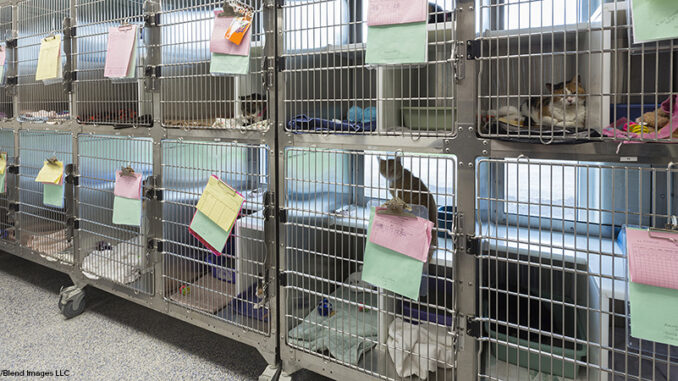
Coronavirus and Unemployment
It’s no surprise that all of the shutdowns surrounding the COVID-19 pandemic mean that a lot of people are out of work. But what exactly do those numbers look like? Unfortunately, they’re not good. In fact, in the last two weeks in the United States, nearly ten million people filed for unemployment benefits. And that number would likely have been even higher, except that several states’ employment Web sites crashed due to overuse. (For the sake of comparison: last year at this time, the weekly claim total was a mere 211,000 nationwide.)
While virtually all areas of business have been impacted, the hardest hit include the food service industry and accommodations (such as hotels, motels, and resorts). Also, while all states have seen a huge increase in unemployment claims filed, the biggest surges were in California, Florida, and New York. States are finding themselves completely unable to deal with this level of need, as systems crash and unemployed workers can’t get through on backlogged phone lines. Reaching a human being in any state unemployment office is virtually impossible. The biggest fear is that these huge levels of need will lead to delayed payments. Meanwhile, workers who have been laid off struggle to pay their rent, buy groceries, and pay their bills.
Experts say that the national unemployment rate could eventually climb as high as 15 percent. (Keep in mind that when this pandemic began, the unemployment rate was holding steady at 3.5 percent.) As many as 20 million people are expected to lose their jobs in the coming weeks.
Dig Deeper In the first week of the shutdowns, 3.3 million people claimed unemployment benefits. The following week, there were 6.6 million claims filed. If this trend continues, how many people would file for unemployment benefits the week after that?
Fostering a Pet? Join the Club!
There’s no debating that the coronavirus pandemic has been rough on everyone, from students to small business owners. But one group may actually be benefitting from the current circumstances: homeless pets. Across the nation, the number of people fostering pets has skyrocketed. The harder hit an area has been by the virus, the higher the rate of pet fostering applications there. In fact, in a few places, animal shelters have even closed down temporarily because there are simply no longer any animals left for them to take care of.
Why the sudden foster pet craze? There are a couple of reasons. First, animals are proven to reduce stress and anxiety–and we are all feeling plenty of that nowadays. Some people make the decision to foster a pet because it brings them some comfort in uncertain times. Also, social distancing means that people are spending most of their time isolated in their homes, away from friends and extended family. A pet might help them to feel less lonely. Others may want to “give back” by doing something meaningful to help someone (or something) else. Fostering an animal can be one way to feel like you are making a positive difference in your community.
Animal rescue agencies, however, are quick to point out that fostering a pet is not the same thing as adopting one. Eventually, after the outbreak has passed, these animals will still need to be placed into permanent, loving homes.
Dig Deeper Some animal shelters have constructed “drive-thru” pet fostering and adopting models, while others are foregoing the traditional application process in an effort to place as many animals into homes as quickly as possible. Use Internet resources to find an animal shelter in your community. Call or consult the Web site to find out what their process is to adopt or foster an animal during the current crisis.
No Such Thing as a Free Book?
Now that you’re probably stuck at home all day every day, it’s a great time to curl up with a good book. Except that, with libraries closed, bookstores shut down, and online delivery services such as Amazon taking longer than usual, it may be tough to get your hands on a good book in the first place.
Luckily, a nonprofit group called the Internet Archive has created a “National Emergency Library.” The group has collected roughly four million books and made them available for free online, with no waitlists–meaning that you can go online any time to access nearly any book you could ever want or imagine, completely for free.
Sounds great, right? One group doesn’t think so. Let’s take a step back: out of the four million free titles in the National Emergency Library, 2.5 million are already available for free as part of the public domain. However, the remaining 1.4 million digitized books are not. And in some cases, the Internet Archive neglected to get the permission of the authors before making their books available for free online. Representing writers nationwide, the Authors Guild states that writers–most of whom already make very little money at their craft–are now suffering financially due to canceled book tours, loss of freelance writing jobs, etc. And now, because of the National Emergency Library, people are reading copies of their books without paying for them.
So, how can we as readers access books during this crisis, while still being fair to writers? The Authors Guild suggests checking out e-books from your local library instead, which supports writers, publishers, and public libraries.
Dig Deeper What is meant by the phrase “public domain”? When does a book enter the public domain?
Test Optional?
No school means no tests, right? But what about major standardized tests that can’t be canceled, such as the SAT and ACT? Well, if we’ve learned one thing from the coronavirus pandemic, it’s that things we used to think were written in stone turned out not to be so critical after all. Even college entrance exams can be–and have been–canceled.

But does this mean those students won’t be able to apply to college now? And how will colleges view applications without those all-important standardized test scores? So far, about a dozen schools have already agreed to drop the tests from their admissions requirements. This is in addition to the thousand (or so) colleges that already no longer require them for other reasons. While some schools have indicated that their plan to go “test-optional” is temporary, others say that they have been debating whether or not to eliminate the test score requirement for a long time, and now seems like a great time to do exactly that.
The debate surrounding standardized testing is ongoing. On the one hand, universal standardized tests are a good way to measure all students using the same scale. While a high GPA from one school district might mean more than a high GPA from another, standardized tests ask the same questions of every student, and in that way, they potentially can level the playing field. But at the same time, flawed testing practices and inherent biases in the tests themselves have led many experts to ask whether these tests measure anything other than a student’s ability to successfully take a test.
